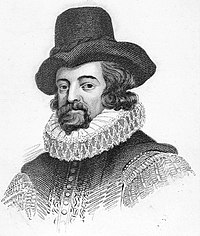 OK, we know him, but what else?
OK, we know him, but what else?
Things are moving slowly around here what with the book and all, but a while ago in attempting to organize “what I think I know” about sciences-related things from a prior era well outside my expertise, I put together a snazzy little sketch of relations between areas of interest to historians of science and historians of ideas and creative practices more generally. The idea is that you could make the diagram into some computer 3-D ball-like model and rotate it around and look at various areas. Failing having a snazzy 3-D model complete with pull-up bibliographies, pictures, biographical databases, time-lines, and the like (but, seriously, how awesomely useful would that be?) I thought it would be of interest to toss out a few areas and connections between them that I am under the impression people who work on the pre-1600 period care about. The idea is to have a sort of first approximation of what a historiographical synthesis would look like, and then figure out how the picture is right and wrong. So, in no real order, the following represent chains of connections, rather than homogeneous categories….
1. Astronomy-mathematics/geometry: Big area of interest, classically on account the the exalted place of astronomy in the scientific revolution, but c. 1600 is mainly a wonky area of table-making, useful for calendars, astrology. Big specialist historiography.
2. Mathematics/geometry-mechanics-optics-music theory: The “other” mathematical fields. I really have no idea to what extent interest in these areas overlapped with interest in professional astronomy. Obviously some people had wide interests, but if you were to take a survey how deep would it run, I couldn’t make a good guess of what the results would be.
3–19 after the jump.
3. Astronomy-surveying-cartography-navigation-instrument making: More practical; a “growth industry” of the period, but don’t really know how widespread advanced methods are. Also don’t know to what extent these are of concern to university geometers; Galileo obviously, but beyond that?
4. Instrument making-surveying-drafting-architecture-art: This is where I’m under the impression the Renaissance-studies literature gets dense. Probably fascinating, but how to synthesize into a coherent picture?
5. Architecture-naval architecture-fortification-ballistics: See 4.
6. Theology-Paripatetic philosophy: Probably the most important intellectual pursuit of the period; doubtless a substantial literature somewhere, but outside of our scholarly domain. But important because….
7. Paripatetic theology-Paripatetic natural philosophy-medical theory: I imagine sort of marginal to the mainstream of university philosophy, but soon to take a lot of flak. Worth knowing more about.
8. Alternative natural philosophies: Hermeticism-Paracelsian doctrines-natural magic-Epicureanism-atomism: I know there’s a literature on this, but I’m not really sure how to characterize it.
9. Cartography-cosmography-travel literature-“book lore”-poetry: Huge growth industry in history of science scholarship.
10. Natural magic-“book lore”-alchemy-artisanry: See 9.
11. Medical theory-physicians-apothecaries-botanists-surgeons-midwifery: Big literature on this stuff; sort of a high-traffic crossroads of ideas, also an area of significant dispute and tension. Early institutionalization of expertise.
Below this point, I’ll dispense with the commentary. It’s either stuff I know nothing about, or stuff where I know there’s a relevant literature.
12. Apothecaries-botany-cosmography-illustration-drafting.
13. Physicians-surgeons-artisans.
14. Architects-artisans-war
15. (Medicine-)court-law-ministry-politics-war
16. Court-politics-ethics-rhetoric-poetry
17. Court-politics-ethics-ministry-art
18. Court-art-architecture-artisanry-gardening-botany
19. Rhetoric-poetry-grammar(-music theory?)
OK, so what good does this do me? I think of it as a sort of a mental model with which to approach a literature. If I want to learn about these things, what are the relevant institutions, who are the relevant people? Where I can I best learn about them? So, not expecting to gain anything resembling mastery, what I’d like to do is try and make a little sense out of this sketch. I think I’ll try and start with the artisans, which means, as far as I know, going to the works of Pamela Smith and Pamela Long. After that, I’ll sketch out a new model and see if anything of interest develops.